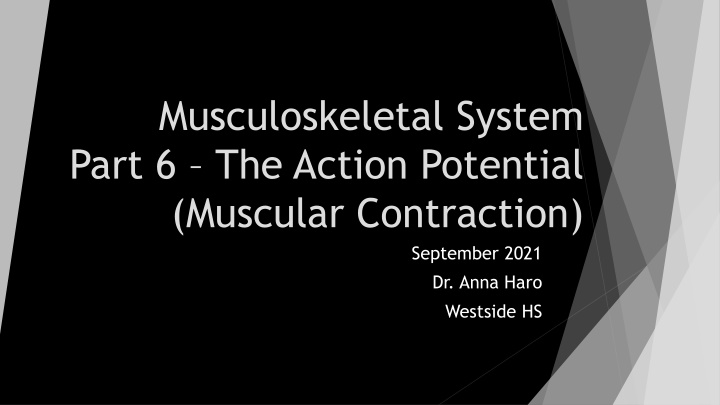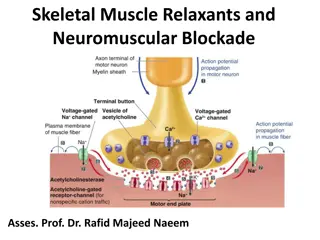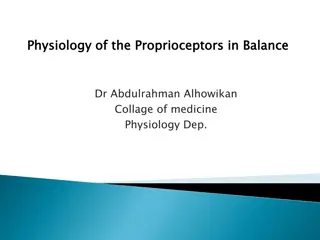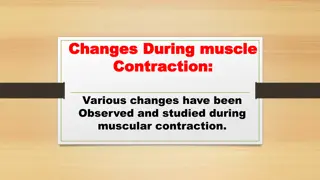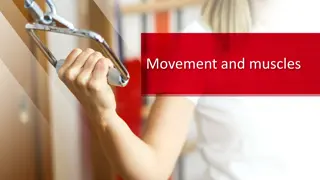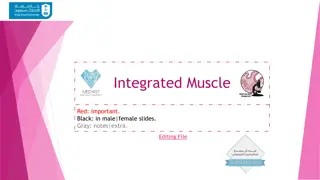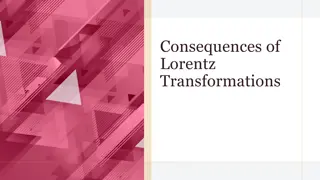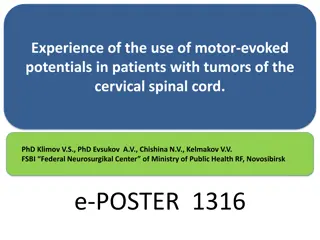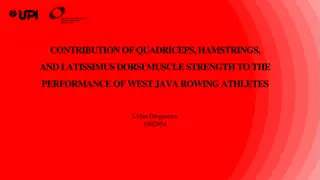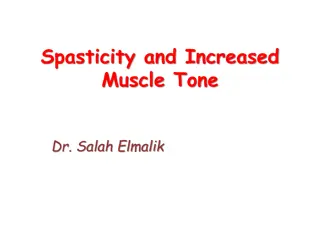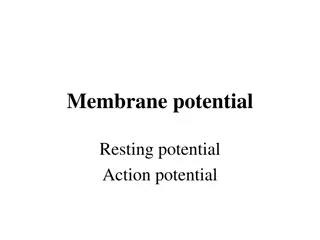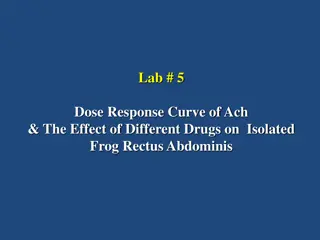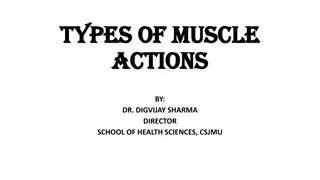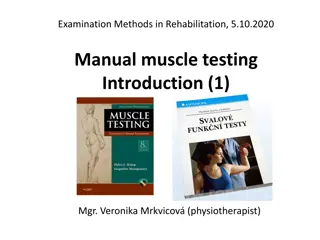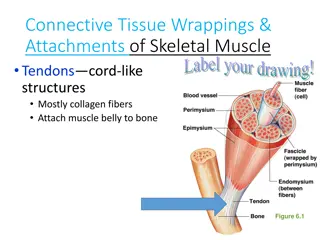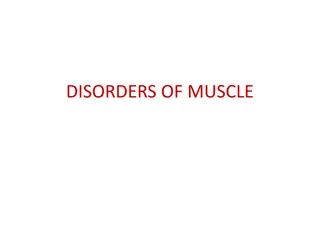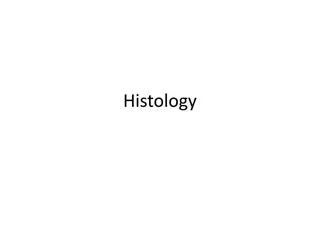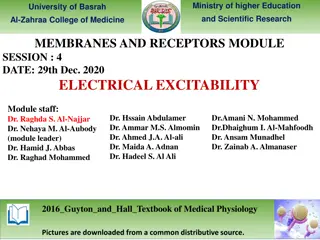Muscle Contraction and Action Potentials
Muscle contraction is triggered by action potentials traveling along nerves to muscles via motor neurons. These electrical signals lead to rapid voltage changes across cell membranes, generating impulses for muscle contraction. Learn about motor neurons, action potentials, and the role of ions in muscle function.
Download Presentation

Please find below an Image/Link to download the presentation.
The content on the website is provided AS IS for your information and personal use only. It may not be sold, licensed, or shared on other websites without obtaining consent from the author.If you encounter any issues during the download, it is possible that the publisher has removed the file from their server.
You are allowed to download the files provided on this website for personal or commercial use, subject to the condition that they are used lawfully. All files are the property of their respective owners.
The content on the website is provided AS IS for your information and personal use only. It may not be sold, licensed, or shared on other websites without obtaining consent from the author.
E N D
Presentation Transcript
Musculoskeletal System Part 6 The Action Potential (Muscular Contraction) September 2021 Dr. Anna Haro Westside HS
LEARNING Objectives TEKS: 130.231.(c)(1)(A, & B) and 130.231.(c)(2)(A, B, C, F, & G) & (3)(B) Students will apply previous knowledge of human and cellular biology and chemistry. Students will evaluate the relationship between the nervous system and the musculoskeletal system. Students will describe the function of a motor neuron. Students will identify the steps of an action potential. Students will describe the four ions used in the generation of motor neuron stimulation.
Objetivos de aprendizaje TEKS: 130.231.(c)(1)(A, & B) and 130.231.(c)(2)(A, B, C, F, & G) & (3)(B) . Los estudiantes aplicar n conocimientos previos de biolog a y qu mica humana y celular. Los estudiantes evaluar n la relaci n entre el sistema nervioso y el sistema musculoesquel tico. Los estudiantes describir n la funci n de una neurona motora. Los estudiantes identificar n los pasos de un potencial de acci n. Los estudiantes describir n los cuatro iones utilizados en la generaci n de estimulaci n de neuronas motoras.
What causes a muscle to contract? A muscle contraction is triggered when an Action Potential travels along the nerves to the muscles. Muscle contraction begins when the nervous system generates a signal. The signal, an impulse called an action potential, travels through a type of nerve cell called a motor neuron. (Visiblebody.com, 2021).
What is a motor neuron? The motor neuron carries an electrical signal _______ from the spinal cord to the cell membrane of the muscle cell. One neuron can innervate multiple cells and muscle fibers, causing simultaneous contraction of the entire muscle. Initially, the signal originates from a sensory neuron, which is transmitted to the brain, relayed by the thalamus, perceived by the cerebral cortex, and then transmitted back out to the muscle to stimulate a response, thus generating a muscular contraction. ACh is the NT responsible for the transmission of motor neuron signals. Image from: https://alevelbiology.co.uk/notes/myelinated -motor-neurons/, accessed 13 Sept 2021.
What is an action potential? An action potential is a rapid rise and subsequent fall in voltage (or electric charge) across a cellular membrane with a characteristic pattern to generate an electrical impulse and subsequent muscle contraction. The influx and efflux of ions creates a net positive or net negative charge between the inside and outside of the cell membrane. The difference in electrical charge during the action potential is called the potential difference and compares the relative charge inside the cell to outside the cell. The change in the electric charge creates the impulse. The motor neuron creates an electrical impulse, or action potential, that causes the muscle to contract. Discuss: what types of muscle tissue receive transmission from the nervous system?
What are the basic steps of action potential? 1. Resting phase, also called the resting potential is when the neuron is at rest. There is no net movement of ions into or out of the cell. The membrane potential is negative (more positive cations outside the cell than inside the cell.) 2. The rising phase is when the influx of positive ions (mainly Na++) outpace the efflux of cations, resulting in a rapid shift from a negative charge to a positive charge. 3. Threshold is the point at which the impulse is generated when the inside of the cell reaches its maximum positive charge, this causes depolarization, which leads to muscular contraction. 4. Repolarization occurs when the membrane potential shifts back to negative and returns to resting phase.
What ions create the concentration gradient for an action potential to occur? Na K Ca Cl Discuss: which are cations and which are anions? Active transport occurs through the Na/K ATP pump. Discuss: What is ATP? K influx and efflux occur naturally due to concentration gradient. Ca stimulation of the pre-synaptic neuron causes the release of ACh. Rapid influx of Na due to stimulation from ACh creates depolarization and the electrical impulse for the action potential, causing the muscle to contract.
Questions about muscle contraction and the action potential? I don t have most of the answers, but I can help you find the right references. Remember the HON-code? https://www.hon.ch/HONcode/
References 1. Shier D, Butler J, Lewis R. Hole s Human Anatomy and Physiology, 9th edition, McGraw Hill Education Publishing, 2002. 2. http://ibbiologyhelp.com/HumanPhy siology/nervesandsynapses.html 3. https://www.visiblebody.com/learn/ muscular/muscle-contractions
